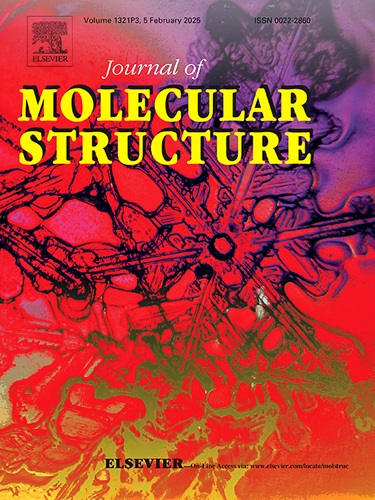Combination of cryo-mediated and salt-assisted liquid-phase exfoliation for GaSe nanosheets preparation with absorption coefficient estimation via Raman signal attenuation
IF 4
2区 化学
Q2 CHEMISTRY, PHYSICAL
引用次数: 0
Abstract
In this study, a novel preparation method combining cryo-mediated method and salt-assisted liquid-phase exfoliation is presented for the preparation of Gallium Selenide (GaSe) nanosheets and the absorption coefficient are estimated by the Raman signal attenuation method on silicon substrates.It was found that Potassium citrate (C6H5K3O7·H2O) as an accelerator increased the lateral size of GaSe nanosheets, while employing liquid nitrogen as a cryo-mediation significantly reduced the surface roughness of the nanosheets. Furthermore, a correlation exists between the duration of cryo-pretreatment and the thickness distribution of GaSe nanosheets.Using the absorption overlayer model, the study experimentally determined more accurate absorption coefficient of 2D GaSe nanosheets by analyzing the changes in Raman signal intensity on a silicon substrate induced by GaSe nanosheets with varying thicknesses, resulting in an average absorption coefficient of 5.68×104 cm−1.This study introduces a novel approach to prepare GaSe and other two-dimensional (2D) material nanosheets with large size and low roughness, based on which the absorption coefficient of GaSe nanosheets are also determined in a more precise way.
结合低温介导和盐辅助液相剥离法制备 GaSe 纳米片,并通过拉曼信号衰减估算吸收系数
本研究提出了一种结合低温介导法和盐辅助液相剥离法的新型制备方法,用于制备硒化镓(GaSe)纳米片,并通过拉曼信号衰减法估算了硅衬底上的吸收系数。研究发现,柠檬酸钾(C6H5K3O7-H2O)作为加速器可增加硒化镓纳米片的横向尺寸,而液氮作为低温媒介可显著降低纳米片的表面粗糙度。此外,低温预处理的持续时间与 GaSe 纳米片的厚度分布之间存在相关性。该研究利用吸收叠加模型,通过分析不同厚度的 GaSe 纳米片在硅衬底上引起的拉曼信号强度变化,实验确定了二维 GaSe 纳米片更精确的吸收系数,得出平均吸收系数为 5.本研究介绍了一种制备大尺寸、低粗糙度 GaSe 和其他二维(2D)材料纳米片的新方法,并在此基础上更精确地测定了 GaSe 纳米片的吸收系数。
本文章由计算机程序翻译,如有差异,请以英文原文为准。
求助全文
约1分钟内获得全文
求助全文
来源期刊

Journal of Molecular Structure
化学-物理化学
CiteScore
7.10
自引率
15.80%
发文量
2384
审稿时长
45 days
期刊介绍:
The Journal of Molecular Structure is dedicated to the publication of full-length articles and review papers, providing important new structural information on all types of chemical species including:
• Stable and unstable molecules in all types of environments (vapour, molecular beam, liquid, solution, liquid crystal, solid state, matrix-isolated, surface-absorbed etc.)
• Chemical intermediates
• Molecules in excited states
• Biological molecules
• Polymers.
The methods used may include any combination of spectroscopic and non-spectroscopic techniques, for example:
• Infrared spectroscopy (mid, far, near)
• Raman spectroscopy and non-linear Raman methods (CARS, etc.)
• Electronic absorption spectroscopy
• Optical rotatory dispersion and circular dichroism
• Fluorescence and phosphorescence techniques
• Electron spectroscopies (PES, XPS), EXAFS, etc.
• Microwave spectroscopy
• Electron diffraction
• NMR and ESR spectroscopies
• Mössbauer spectroscopy
• X-ray crystallography
• Charge Density Analyses
• Computational Studies (supplementing experimental methods)
We encourage publications combining theoretical and experimental approaches. The structural insights gained by the studies should be correlated with the properties, activity and/ or reactivity of the molecule under investigation and the relevance of this molecule and its implications should be discussed.
 求助内容:
求助内容: 应助结果提醒方式:
应助结果提醒方式:


